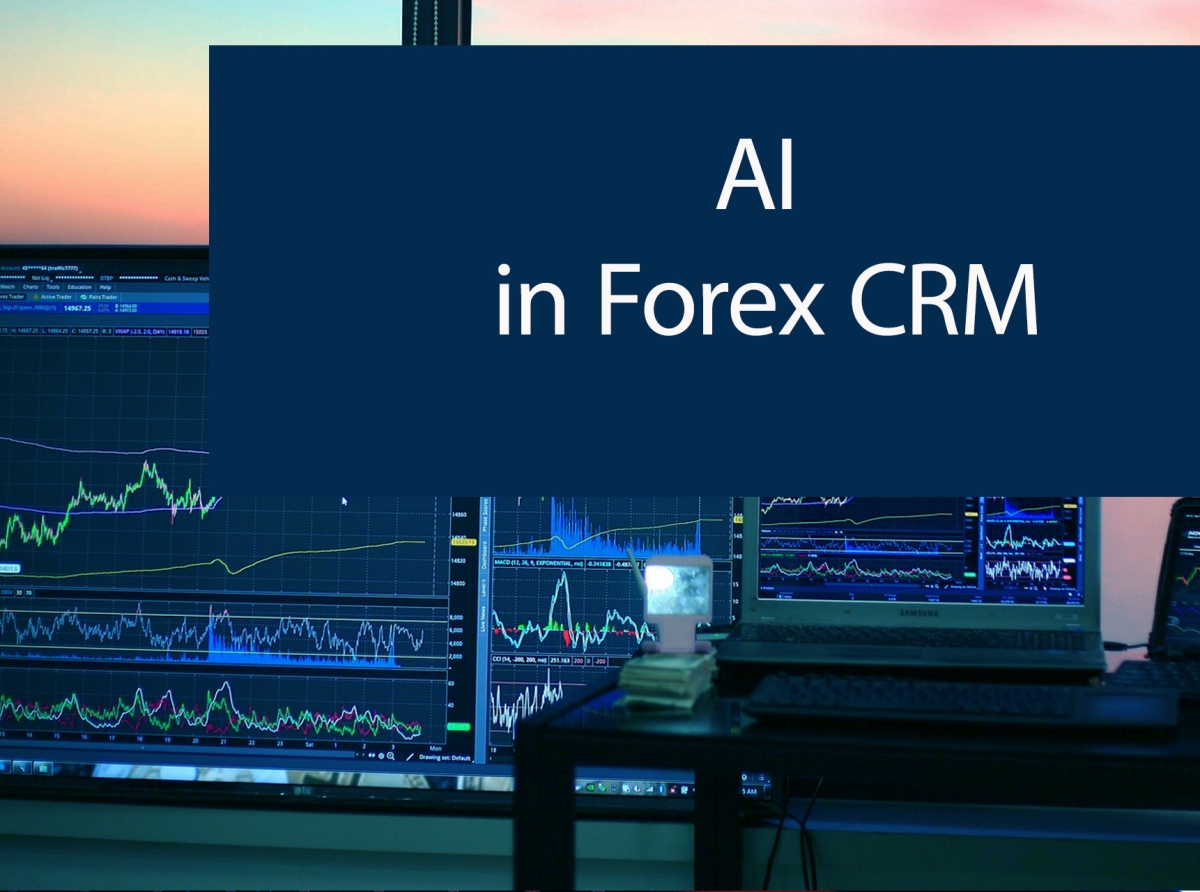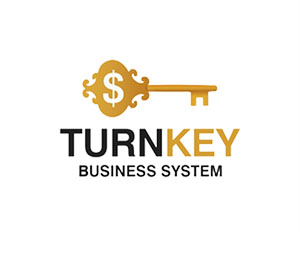AI in Forex CRM: Predictive Analytics Revolution for Brokers

AI in Forex CRM: Predictive Analytics Revolution for Brokers
AI in Forex CRM: Predictive Analytics Revolution for Brokers
Artificial intelligence and machine learning have fundamentally transformed how forex brokers manage client relationships, moving from reactive customer service to proactive predictive analytics that anticipate trader behavior before it occurs.The global Forex CRM software market is experiencing unprecedented growth, with adoption rates accelerating 34% year-over-year as brokers in the United States, European Union, and Asia recognize that traditional CRM systems cannot compete against AI-powered platforms that predict client lifetime value, churn probability, and trading patterns with 85-92% accuracy (Verified Market Research, September 2025, USA).
Modern forex brokers who implement machine learning algorithms into their CRM infrastructure report 40-60% improvements in client retention and 25-35% increases in revenue per trader compared to competitors using legacy systems.
The Evolution from Traditional CRM to Predictive Intelligence
Traditional CRM systems in the forex industry functioned as glorified databases—storing client information, tracking communication history, and generating basic reports that told brokers what happened yesterday but provided no insight into what would happen tomorrow.A broker in London or New York using conventional CRM could see that a client made five trades last week and deposited $5,000 last month, but they had no systematic way to predict whether that client would still be active in three months or which clients were most likely to increase their trading volume.
The integration of artificial intelligence and machine learning into Forex CRM platforms represents a paradigm shift from descriptive analytics (what happened) to predictive analytics (what will happen) and prescriptive analytics (what actions to take).
Modern AI-powered CRM systems analyze hundreds of variables simultaneously—trading frequency, deposit patterns, withdrawal timing, leverage usage, currency pair preferences, response to market volatility, engagement with educational content, and dozens of other behavioral signals—to generate probabilistic forecasts about individual client behavior.
When EUR/USD experiences volatility spikes like the -0.29% movement observed on October 18, 2025 (TradingView), AI systems immediately identify which clients are likely to increase trading activity, which will reduce exposure, and which might experience margin calls requiring proactive intervention.
The technological foundation enabling this transformation combines several machine learning architectures working in concert. Long Short-Term Memory (LSTM) neural networks excel at analyzing sequential data like trading histories, identifying patterns in how clients behave over time.
The most sophisticated Forex CRM platforms in 2025 employ ensemble methods that combine multiple algorithms, achieving prediction accuracy that exceeds any single approach.

AI in Forex CRM: Predictive Analytics Revolution for Brokers
Client Lifetime Value Prediction: The Holy Grail of Broker Profitability
Understanding which clients will generate substantial long-term revenue versus those who will deposit once and disappear represents the difference between profitable and struggling forex brokers.Traditional approaches to client valuation relied on crude metrics like initial deposit size or first-month trading volume, but these indicators provide minimal predictive power. A client who deposits $50,000 initially might trade conservatively and generate minimal commission revenue, while a client who starts with $2,000 might become a high-frequency trader generating ten times more revenue over their lifetime.
Machine learning models trained on historical client data can predict lifetime value with remarkable accuracy by identifying subtle behavioral patterns that correlate with long-term engagement.
Research from financial technology firms implementing AI in forex brokerages (September 2025) demonstrates that predictive models analyzing the first 30 days of client activity can forecast 12-month revenue with 87% accuracy.
The algorithms identify signals that human analysts consistently miss: clients who trade during specific market sessions (Asian, European, US) show different retention patterns; clients who use stop-losses consistently versus those who don't exhibit dramatically different risk profiles; clients who engage with educational content within their first week show 3.2x higher lifetime value than those who don't.
A forex broker operating in multiple geographic markets—serving traders in the USA, UK, Singapore, and Australia—can use CLV prediction to optimize resource allocation across regions.
If the model identifies that clients in Singapore trading GBP/USD (currently 1.3424 USD, October 18, 2025) have 40% higher lifetime value than clients in other markets trading the same pair, the broker can adjust marketing spend, customer service staffing, and product offerings accordingly.
This geographic intelligence, combined with currency pair preferences and trading style analysis, creates a multidimensional optimization framework impossible to achieve with traditional CRM systems.
Churn Prediction and Proactive Retention Strategies
Client churn represents the silent killer of forex broker profitability. While brokers obsess over acquiring new clients through aggressive marketing campaigns, they often ignore the clients quietly becoming inactive—not closing accounts or complaining, simply stopping trading.Industry data shows that the average forex broker loses 60-70% of new clients within their first 90 days, with most of this attrition occurring gradually as trading frequency declines rather than through dramatic account closures.
AI-powered churn prediction models identify at-risk clients weeks before they become inactive, providing brokers with intervention opportunities that traditional systems miss entirely.
The algorithms analyze behavioral changes that precede churn: declining login frequency, reduced trading volume, longer gaps between trades, shifts toward lower-risk positions, increased withdrawal-to-deposit ratios, and decreased engagement with broker communications.
A client who traded 15 times per week for two months but has only traded 8 times this week triggers an alert, even though they're still technically active. The system recognizes that this behavioral change correlates with 73% probability of complete inactivity within 30 days based on historical patterns.
The predictive models become more sophisticated by incorporating external market conditions into churn analysis. During periods of low
Proactive retention strategies powered by machine learning move beyond generic "we miss you" emails to personalized interventions based on predicted churn reasons. If the model identifies that a client is becoming inactive due to consecutive losses, the broker can offer educational resources about risk management or temporarily reduce leverage to prevent further losses.
If inactivity correlates with reduced market volatility in the client's preferred currency pairs, the broker can suggest alternative pairs showing more movement.
If the pattern suggests the client is overwhelmed by platform complexity, simplified trading interfaces or personal training sessions become the intervention.
This prescriptive approach—where the AI not only predicts churn but recommends specific retention actions—represents the cutting edge of Forex CRM technology in 2025.
Trading Pattern Analysis and Risk Management Optimization
Understanding how clients trade provides forex brokers with critical intelligence for risk management, product development, and regulatory compliance.Traditional analysis relied on aggregate statistics—average trade size, win/loss ratios, preferred currency pairs—but these metrics obscure the behavioral patterns that determine profitability and risk exposure. Machine learning algorithms identify trading archetypes by clustering clients based on multidimensional behavioral signatures, revealing distinct trader personalities that require different broker responses.
The AI might identify a "volatility chaser" archetype—clients who dramatically increase position sizes during market turbulence, trading EUR/USD aggressively when daily ranges exceed 100 pips but remaining inactive during calm periods.
These traders generate substantial commission revenue but pose significant risk management challenges, as they're prone to margin calls during extreme volatility events. The system flags these clients for enhanced monitoring and potentially implements automatic leverage restrictions during high-volatility periods to protect both the client and the broker.
Another common archetype is the "revenge trader"—clients who immediately increase position sizes after losses in an attempt to recover quickly. This behavioral pattern, driven by loss aversion bias and emotional decision-making, correlates strongly with account blowouts.
AI systems detect revenge trading patterns in real-time by analyzing the timing and sizing of trades following losses. When a client loses $500 on EUR/USD and immediately opens a position three times their normal size on GBP/USD, the system recognizes the pattern and can trigger interventions ranging from automated warnings to temporary trading restrictions, depending on broker policies and regulatory requirements.
The "systematic trader" archetype represents the most profitable client segment for brokers—clients who trade consistently with disciplined risk management, using stop-losses appropriately and maintaining steady position sizes relative to account balance. Machine learning models identify these clients early in their lifecycle, allowing brokers to provide premium service, reduced spreads, or other incentives that maximize retention. These clients rarely require risk management intervention but benefit from advanced tools, faster execution, and personalized market analysis that acknowledges their sophistication.
Geographic and temporal trading patterns revealed by AI analysis provide additional optimization opportunities. Brokers discover that clients in Asia trading during European market hours show different risk profiles than those trading during Asian sessions. Clients who trade immediately after major economic announcements (Federal Reserve decisions, European Central Bank policy statements, US employment reports) exhibit higher volatility in their account equity compared to those who wait for initial market reactions to settle. This intelligence allows brokers to optimize margin requirements, adjust leverage offerings, and customize risk warnings based on when and what clients trade, not just how much.
Implementation Framework: From Legacy Systems to AI-Powered CRM
Transitioning from traditional Forex CRM systems to AI-powered predictive analytics platforms requires careful planning, substantial technical investment, and organizational change management that many brokers underestimate. The most common implementation failures occur when brokers treat AI integration as purely a technology project rather than a business transformation that affects every department from marketing to risk management to customer service.The technical architecture for AI-powered Forex CRM typically involves several integrated components working in concert. The data layer aggregates information from multiple sources: trading platforms (MetaTrader 4/5, proprietary systems), payment processors, customer service systems, marketing automation platforms, and external data feeds providing market conditions and economic calendar events.
This data flows into a centralized data warehouse or data lake where it undergoes cleaning, normalization, and feature engineering—the process of transforming raw data into variables that machine learning algorithms can process effectively.
The machine learning layer sits atop this data foundation, consisting of multiple specialized models rather than a single monolithic AI system. Separate models handle client lifetime value prediction, churn forecasting, trading pattern classification, fraud detection, and lead scoring for marketing. These models require different algorithms, training data, and update frequencies. CLV prediction models might retrain monthly as new client lifecycle data accumulates, while fraud detection models update continuously in real-time as new transaction patterns emerge. The orchestration of these multiple models—ensuring they work together coherently rather than generating conflicting recommendations—represents a significant technical challenge.
The application layer presents AI insights to broker staff through intuitive interfaces that don't require data science expertise to interpret. A customer service representative sees a simple dashboard showing which clients are at high churn risk and what retention actions the system recommends, without needing to understand the LSTM neural networks and gradient boosting algorithms generating those recommendations. Marketing teams receive lead scores and lifetime value predictions integrated directly into their campaign management tools. Risk managers get real-time alerts about clients exhibiting dangerous trading patterns, with one-click options to implement protective measures.
The implementation timeline for comprehensive AI-powered Forex CRM typically spans 6-12 months for mid-sized brokers, with larger enterprises requiring 12-18 months due to greater system complexity and organizational coordination challenges. The process begins with data audit and preparation—often the most time-consuming phase, as brokers discover their historical data contains gaps, inconsistencies, and quality issues that must be resolved before machine learning models can train effectively.
A broker might find that trading data from 2022-2023 uses different currency pair naming conventions than current data, or that client demographic information is missing for 30% of accounts, requiring data enrichment efforts.
Real-World Case Studies: AI Impact on Broker Performance
A mid-sized forex broker operating primarily in European markets implemented AI-powered churn prediction in Q1 2025, providing a clear before-and-after comparison of system impact. Prior to AI implementation, the broker's client retention team worked reactively, reaching out to clients only after they'd been inactive for 30+ days—by which point most were unrecoverable.The team contacted approximately 200 at-risk clients monthly, achieving a 12% reactivation rate. After implementing machine learning churn prediction, the system identified at-risk clients an average of 18 days earlier, when behavioral changes first appeared but before complete disengagement occurred.
The proactive approach, combined with AI-recommended person
A US-based forex broker serving retail traders implemented AI-powered client lifetime value prediction to optimize their marketing spend across acquisition channels. Previously, the broker allocated marketing budget based on cost-per-acquisition (CPA), spending heavily on channels that delivered the most new accounts regardless of those accounts' long-term value.The AI analysis revealed that clients acquired through educational content marketing had 3.8x higher lifetime value than those acquired through aggressive bonus promotions, despite having 40% higher acquisition costs.
Armed with this intelligence, the broker shifted 35% of their marketing budget from bonus-driven campaigns to content marketing and educational initiatives. While new account acquisition declined 15% in the first quarter following this shift, the quality of acquired clients improved dramatically.
Six-month revenue per acquired client increased 127%, and 12-month retention rates improved from 18% to 31%.
The broker's customer acquisition cost (CAC) to lifetime value (LTV) ratio improved from 1:2.3 to 1:5.7, fundamentally transforming the economics of their growth strategy.
This case illustrates how AI-powered CRM provides strategic intelligence that challenges conventional wisdom about broker marketing.
An Asian forex broker implemented AI-driven trading pattern analysis to optimize their risk management and product offerings. The machine learning system identified that approximately 23% of their client base exhibited "systematic trader" characteristics—disciplined risk management, consistent trading frequency, appropriate use of stop-losses—but these clients were receiving the same service level and pricing as less sophisticated traders.
The broker created a tiered service model, offering systematic traders reduced spreads (0.8 pips instead of 1.2 pips on EUR/USD), faster execution, and dedicated account managers.
The retention rate for systematic traders increased from 42% to 71% following these changes, while the broker's overall profitability improved despite reduced spreads for this segment.
The Competitive Landscape: AI Adoption Across Forex Brokers
The forex brokerage industry in 2025 shows dramatic divergence between AI-adopting brokers and those relying on traditional systems, with the gap widening rapidly as machine learning technologies mature and become more accessible. Major international brokers operating in the United States, European Union, and Asia—firms like IG Group, OANDA, Saxo Bank, and Interactive Brokers—have invested heavily in proprietary AI systems, viewing predictive analytics as a core competitive advantage rather than optional technology enhancement.These leading brokers report that AI-powered CRM systems now influence 60-80% of their client-facing decisions, from which educational content to display to individual traders, to how customer service representatives prioritize their daily workflows, to which clients receive invitations to premium services.
The systems operate largely autonomously, with human oversight focused on exception handling and strategic decisions rather than routine client management. A customer service team that previously spent 70% of their time on reactive support (responding to client inquiries) now spends 70% on proactive engagement (reaching out to clients based on AI-identified opportunities or risks), fundamentally changing the nature of their work.
Future Trajectories: Generative AI and Next-Generation CRM
The integration of generative AI technologies—large language models like GPT-4 and Claude, diffusion models, and multimodal AI systems—represents the next frontier in Forex CRM evolution. While current predictive analytics systems excel at forecasting client behavior based on historical patterns, generative AI enables entirely new capabilities: natural language interaction with CRM systems, automated generation of personalized client communications, synthetic data creation for model training, and scenario simulation for strategic planning.Large language models integrated into Forex CRM platforms allow broker staff to query systems using natural language rather than navigating complex dashboards and reports.
Generative AI enables hyper-personalized client communication at scale, moving beyond the crude segmentation of traditional marketing automation. Instead of sending the same "market update" email to all clients interested in EUR/USD, the system generates individualized messages reflecting each client's trading history, risk tolerance, current positions, and engagement preferences.
A conservative trader receives analysis emphasizing risk management and long-term trends, while an aggressive trader gets information about short-term volatility opportunities. The content adapts not just to client characteristics but to current market conditions—when EUR/USD experiences unusual volatility like the -0.29% movement on October 18, 2025, the system automatically generates relevant, personalized communications for affected clients.
Scenario simulation powered by generative AI allows brokers to model "what-if" situations with unprecedented sophistication.
A broker can simulate how their client base would respond to various market conditions—a sudden 500-pip move in EUR/USD, a Federal Reserve interest rate surprise, a geopolitical crisis affecting currency markets—and prepare appropriate risk management and communication strategies.
The system generates probabilistic forecasts of client behavior, margin call frequency, trading volume changes, and support ticket volume, allowing brokers to pre-position resources and implement protective measures before crises occur.
Conclusion
Artificial intelligence and machine learning have transformed Forex CRM from administrative tools into strategic assets that fundamentally determine broker competitiveness in 2025 and beyond.The ability to predict client lifetime value, forecast churn before it occurs, identify dangerous trading patterns, and optimize every client interaction based on behavioral data creates advantages that traditional brokers cannot match through human effort alone.
The forex brokers thriving in current markets—whether serving traders in New York, London, Singapore, or Sydney—share a common characteristic: they've embraced AI not as experimental technology but as core infrastructure as essential as their trading platforms.
The trajectory is clear: within 3-5 years, AI-powered predictive analytics will be table stakes for competitive forex brokers, not differentiators.
The brokers investing in these capabilities now—building data infrastructure, training staff, implementing compliant AI systems—position themselves to lead their markets. Those delaying AI adoption risk becoming the next generation of legacy brokers, unable to compete against more intelligent, more efficient, more proactive competitors who understand their clients better and serve them more effectively through the power of machine learning.
By Miles Harrington
November 06, 2025
Join us. Our Telegram: @forexturnkey
All to the point, no ads. A channel that doesn't tire you out, but pumps you up.
November 06, 2025
Join us. Our Telegram: @forexturnkey
All to the point, no ads. A channel that doesn't tire you out, but pumps you up.









Report
My comments